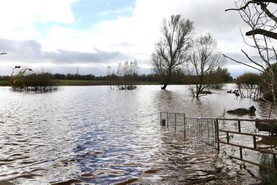The 2019 Department of Agriculture annual sheep and goat census shows the number of ewes in the national ewe flock increasing 10,690 head or 0.4% to reach 2,570,870. The figure brings some stability to the flock following a significant fall in 2018.
The overall increase of 10,690 head hides significant movement in some counties, as reflected in Figure 1. Donegal continues to record significant expansion, with another 8,538 ewes joining its flock in 2019. This brings total numbers to 354,058 head and represents a massive increase of almost 84,000 ewes since 2010.
Kerry increased 2,019 head to 243,025 ewes
Mayo continues to record similar growth to Donegal, with ewe numbers rising 6,446 head to 310,069.
Numbers in Galway, which has the country’s third largest flock, were steady at 277,951. Kerry increased 2,019 head to 243,025 ewes. These four counties combined are home to 46% of the national ewe flock.
Hill flocks
The factor underpinning numbers in these counties is large hill ewe flocks. Figure 2 demonstrates the breakdown per county between mountain/mountain cross sheep and lowland/lowland cross sheep.
Sheep recorded as a mountain or mountain cross breed make up 46.4% of the national flock
The census reports that Donegal, Mayo and Kerry have averaged in the region of 16% of the number of mountain/mountain cross sheep or, when combined, almost half of the country’s mountain/mountain cross sheep.
Sheep recorded as a mountain or mountain cross breed make up 46.4% of the national flock. Other counties where mountain sheep dominate include Cork, Leitrim, Sligo, Wicklow and Waterford.
Significant growth
While the counties listed above stand out due to the large size of the flocks there were other counties with smaller ewe flocks which recorded considerable growth. The majority of these are located along the western seaboard and border region. Sligo added another 3,501 ewes to its flock while Monaghan recorded the largest percentage increase, with its ewe flock increasing 2,011 head or 7.2% to 30,093.
Numbers in Wicklow reduced 7,983 ewes to 152,313 head
These increases were offset by a further reduction in numbers in several counties in the east of the country. Numbers in Wicklow have been steady in recent years but there have been a number of conversions to dairying, some of which have come at the expense of sheep farming.
Numbers in Wicklow reduced 7,983 ewes to 152,313 head. A similar situation is reported in Wexford, where ewe numbers fell 3,650 head, while Laois reduced 1,780 ewes and numbers in Meath and Kildare fell by slightly over 1,000 head.
Flock size
Sheep census forms were sent to 46,124 flock-keepers registered on the Department’s database. There was an 88% response rate, with 28% or 11,000 returns submitted online.
A total of 5,673 respondents recorded that they kept no sheep in December 2019, with 723 of these indicating that they do not intend to return to sheep farming. This left 34,938 flocks possessing sheep on 31 December 2019, which represents a decrease of 248 flocks or a 0.7% reduction on the previous 12 months.
The total number of sheep on farms on 31 December increased 76,413 head or 2% to 3,809,368. When the ewe increase is excluded, it leaves 65,723 sheep carried over into 2020. This in turn underpinned an increase in the sheep kill of over 70,000 head for the first four months of 2020.
The average number of sheep per flock increased by three sheep per flock to 109 head. As reflected in Figure 5 some 69% of flocks (24,015) possessed sheep numbers below the average flock size. This is unchanged on December 2018 levels.
There were 120 more flocks recorded with a flock size of 201 to 300 head, nine more flocks between 301 and 400 sheep, six more flocks between 401 and 500 head and 37 more flocks with in excess of 500 sheep.
It is likely that these increases were driven by an increase in hoggets rather than an increase in ewe numbers. Wicklow recorded the highest flock size of 179 sheep (down eight head), followed by Kildare with 164 sheep (down nine) and Waterford with 159 head.






 This is a subscriber-only article
This is a subscriber-only article










SHARING OPTIONS: